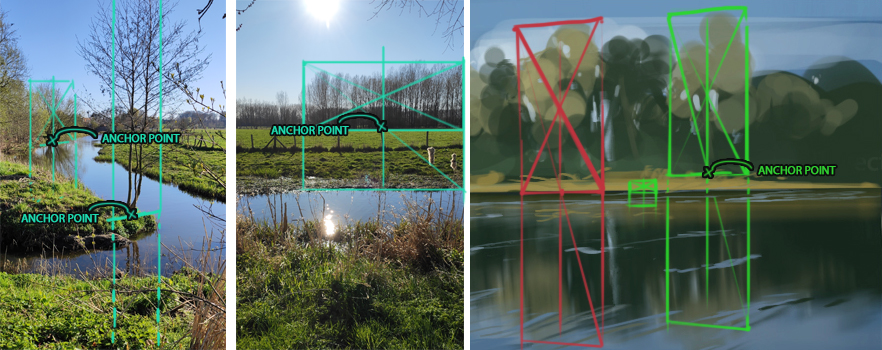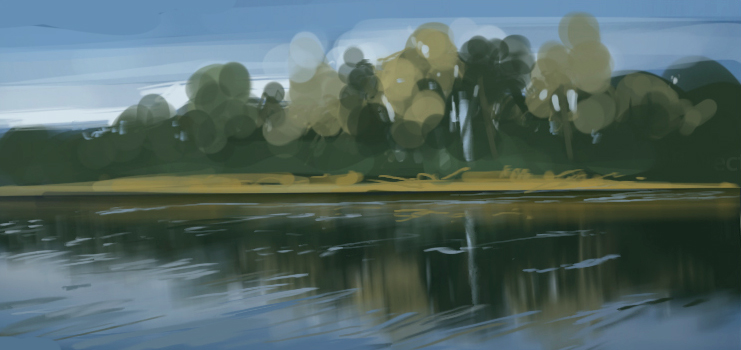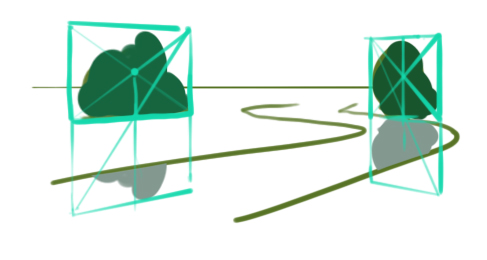When I was taking a stroll recently, I realized that my preferred technique of creating reflections on a water surface isn’t always true. The simple approach only works in specific conditions and is not always accurate. If you want to be more precise, you must keep two other factors in mind as well:
- the position of the landscape element and its relationship with the body of water
- your point of view or the position of the horizon line in relationship with the body of water
By considering these factors, you can achieve a more realistic result.
Two factors to keep in mind
When you use the simple approach of creating reflections, you duplicate the landscape elements you want to reflect and eventually flip them vertically. You use the perspective copying technique for this. The technique provides a base to start with. Because you already have the correct colors and eventually paint over them, you can easily get a pleasing result.
Although this technique yields very quick and believable results at first sight, it is not always correct and true to the scene you’re painting. You have to keep two other factors in mind:
The position of the landscape element and the water
If your landscape element is next to the edge of the water, you reflect the whole element in the water.
If the landscape element is positioned further away from the water, you only reflect a part of the element.
Your point of view and the water
The lower the horizon, the more you will see of the reflection of the landscape elements that are positioned far away from the water. This is because the distance to the water becomes closer.
The higher the horizon, the less reflection you will have from your landscape elements that are positioned far away from the water, as the distance to the water is just further.

Conclusion

The simple approach is only true when the horizon line is low and the landscape elements are quite close to the body of water. You can duplicate the part above the waterline and flip it vertically to get a believable result.
When you position the landscape elements further away from the waterline though, you should copy and flip the elements around their anchor points on the landscape.
Keep in mind that:
- you will see the underside of your landscape element when reflecting it in the water
- clear still water will have a clear fresnel effect
- reflections can be broken up by a current or a gush of wind
If you want to see some more examples of reflections on water, both painted and references, have a look at the plein-air paintings I did.
If you have any other thoughts on the topic, please share them in the comment section below!


Comments